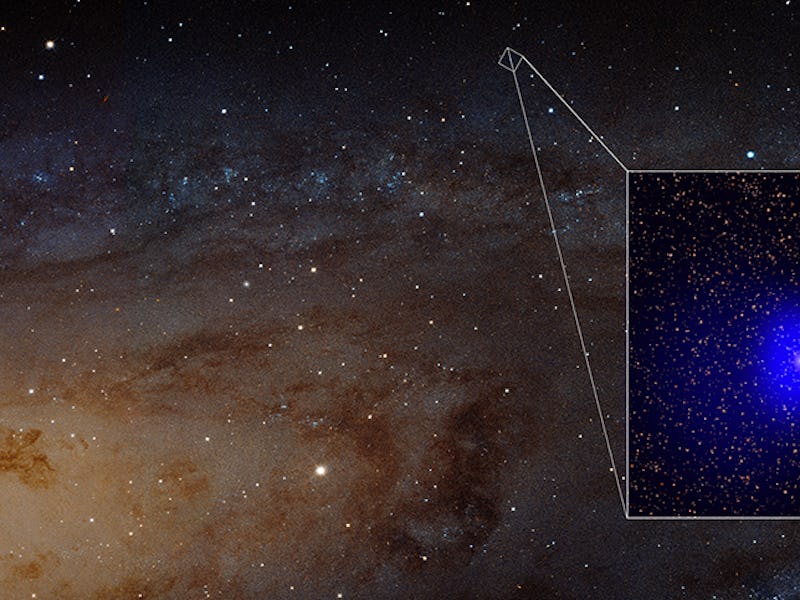Black holes think they can act however they want just because they’re massive voids. Sadly, a couple of unruly ones decided to photobomb our closest galaxy in a new image composed from X-ray data from NASA’s Chandra X-ray Observatory and optical data from ground-based telescopes.
Scientists have long thought that a source called LGGS J004527.30+413254.3 (AKA J0045+41) was located in the Andromeda Galaxy (AKA M31), was located just 2.5 million light-years away. Not only did astronomers find that J0045+41 was much farther away than they thought — about 2.6 billion light-years from Earth, to be exact — using NASA’s Chandra X-ray Observatory, the Gemini-North telescope in Hawaii and the Caltech’s Palomar Transient Factory in California, they discovered a tightly coupled pair of supermassive black holes within it. The team’s findings have been published in The Astrophysical Journal.
“We were looking for a special type of star in M31 and thought we had found one,” the paper’s lead author Trevor Dorn-Wallenstein of the University of Washington said in a statement. “We were surprised and excited to find something far stranger!”
The researchers think the two black holes could have come from two galaxies that merged billions of years ago. Now, these two voids are just a couple of buddies who live less than a hundredth of a light-year apart. In fact, it’s possible this black pair might actually merge one day.
“We’re unable to pinpoint exactly how much mass each of these black holes contains,” the study’s co-author John Ruan of the University of Washington said. “Depending on that, we think this pair will collide and merge into one black hole in as little as 350 years or as much as 360,000 years.”
X-ray: NASA/CXC/Univ. of Washington/T.Dorn-Wallenstein et al.;Optical: NASA/ESA/J. Dalcanton, et al. & R. Gendler
While astronomers didn’t exactly find what they set out for, they found a couple of cosmic oddballs. I smell a buddy comedy.
